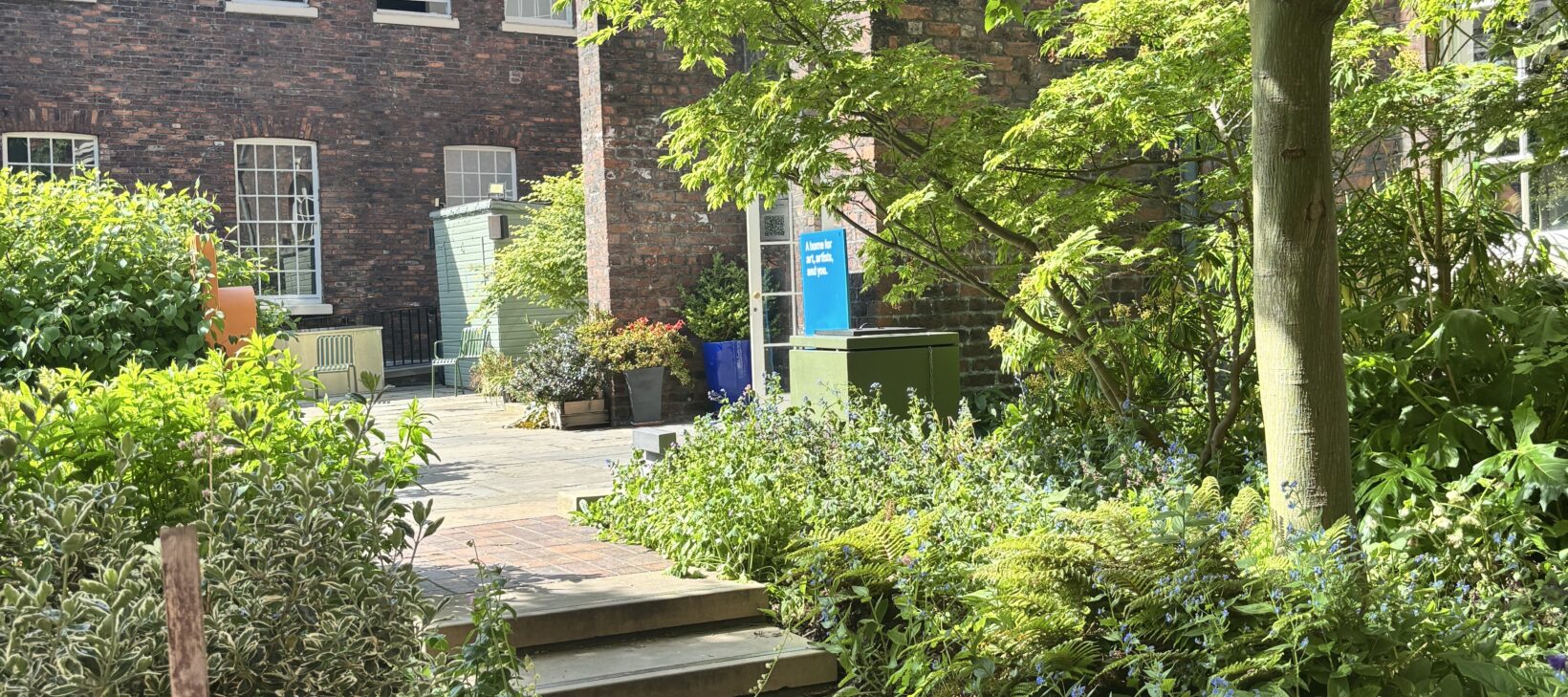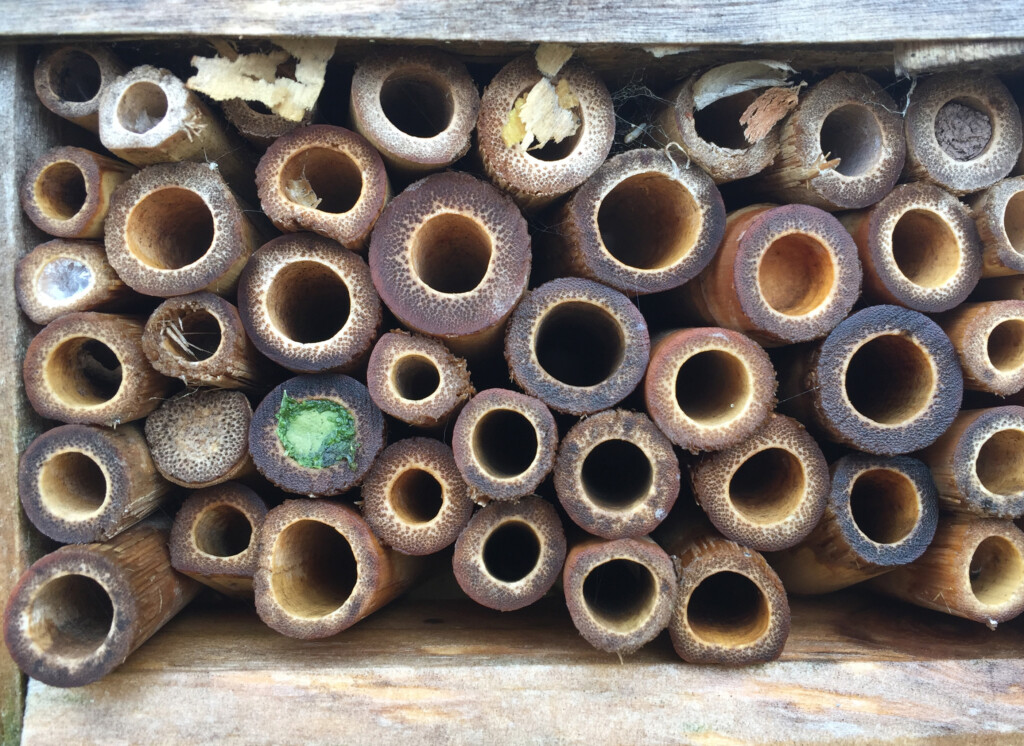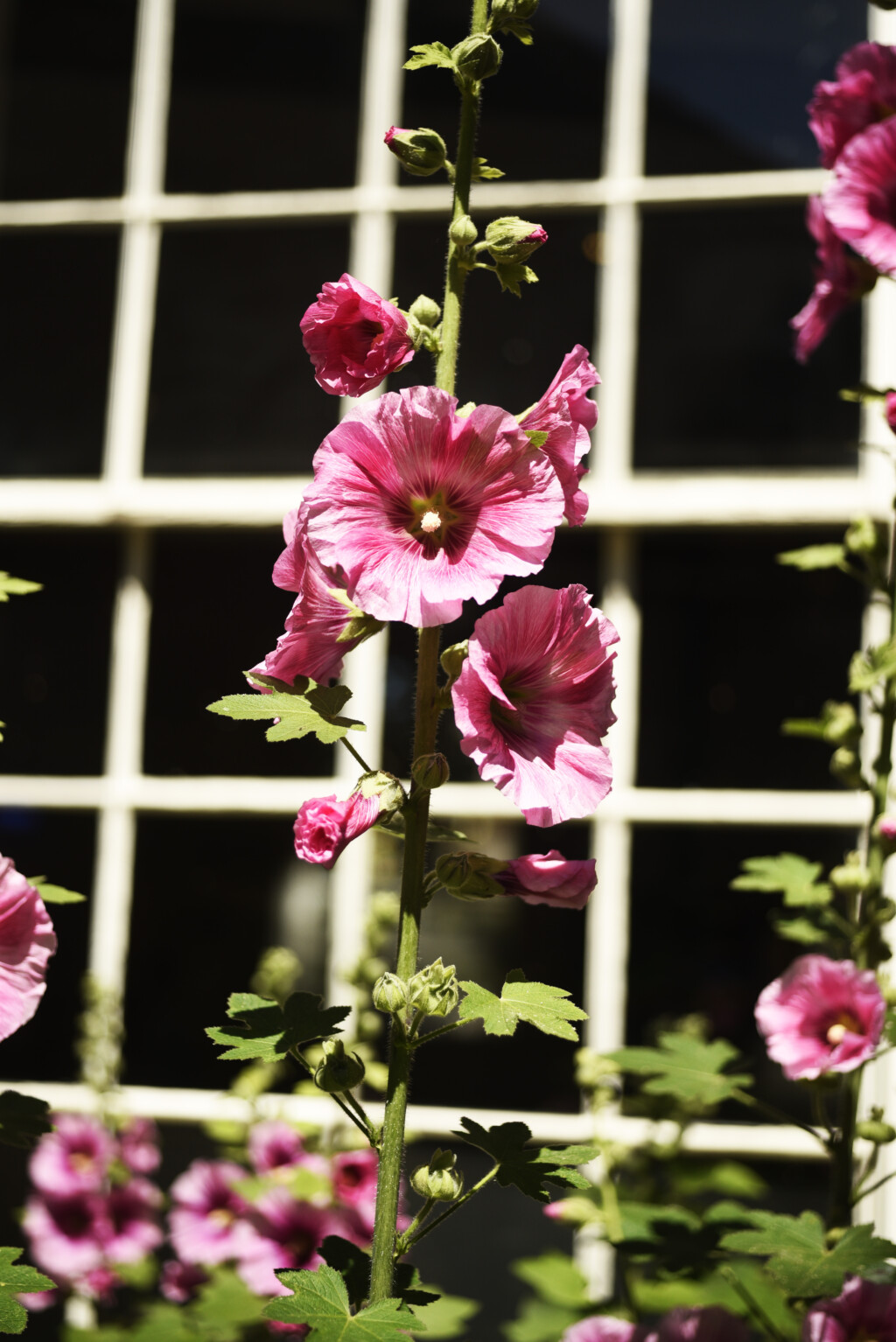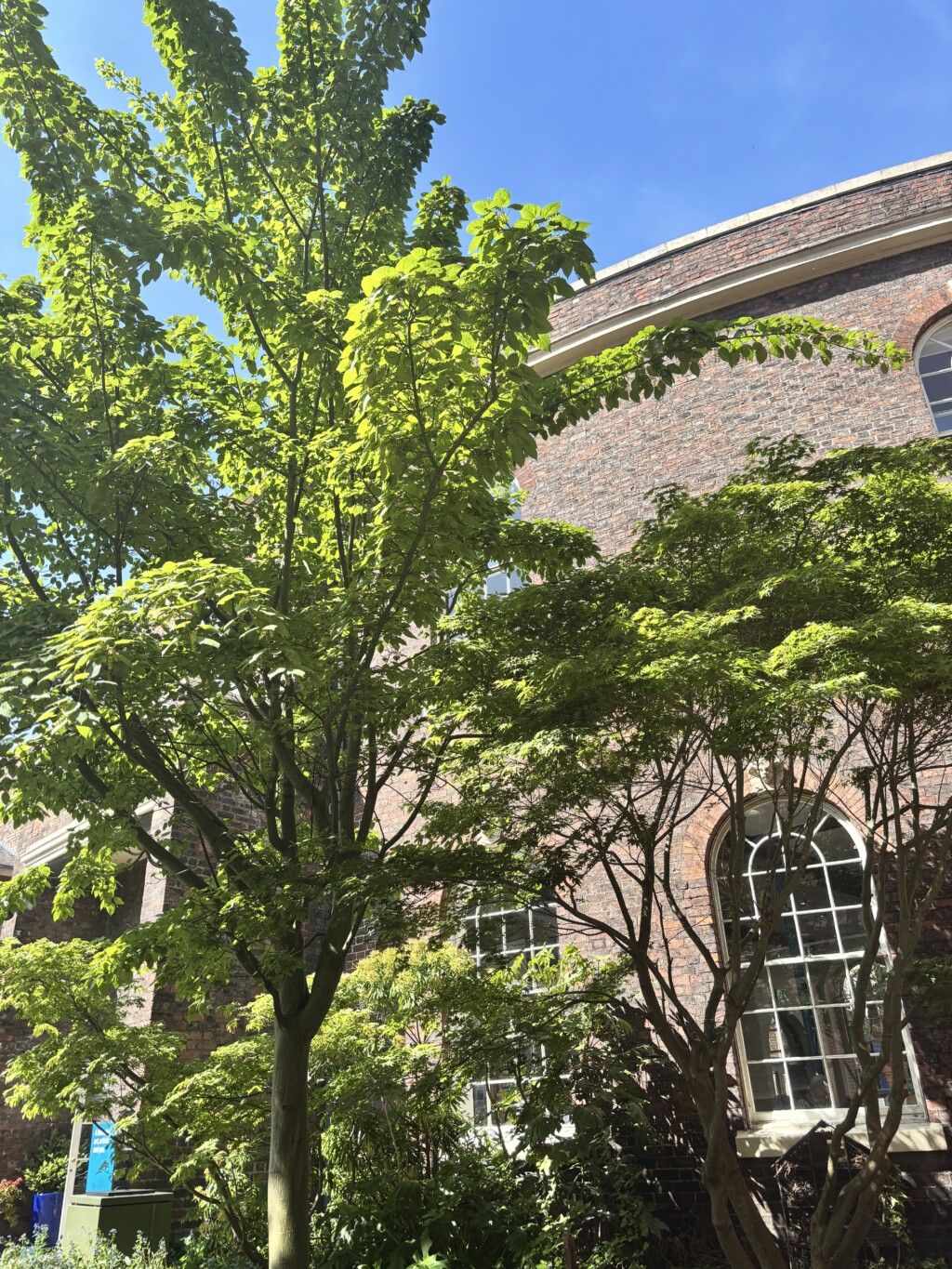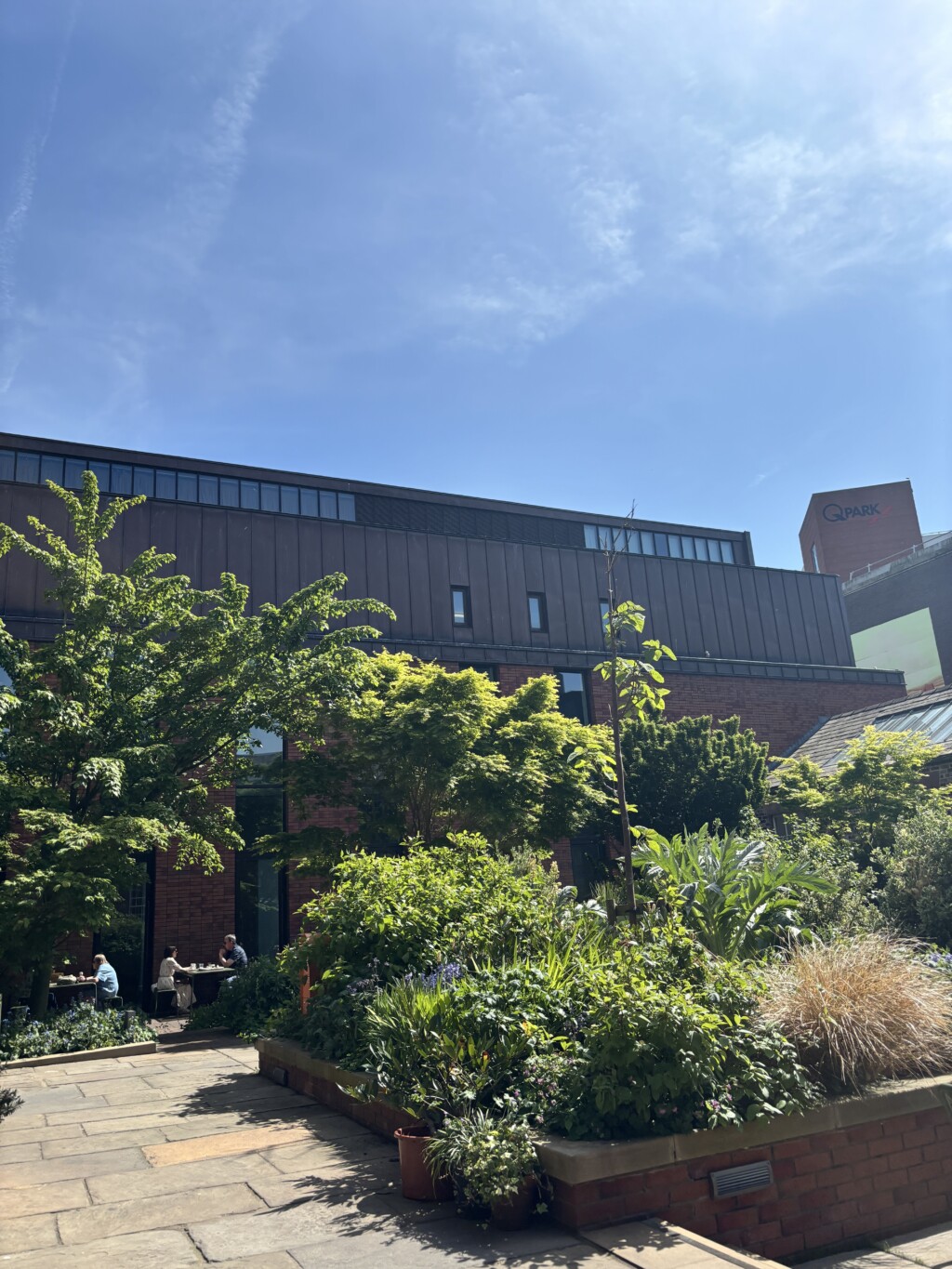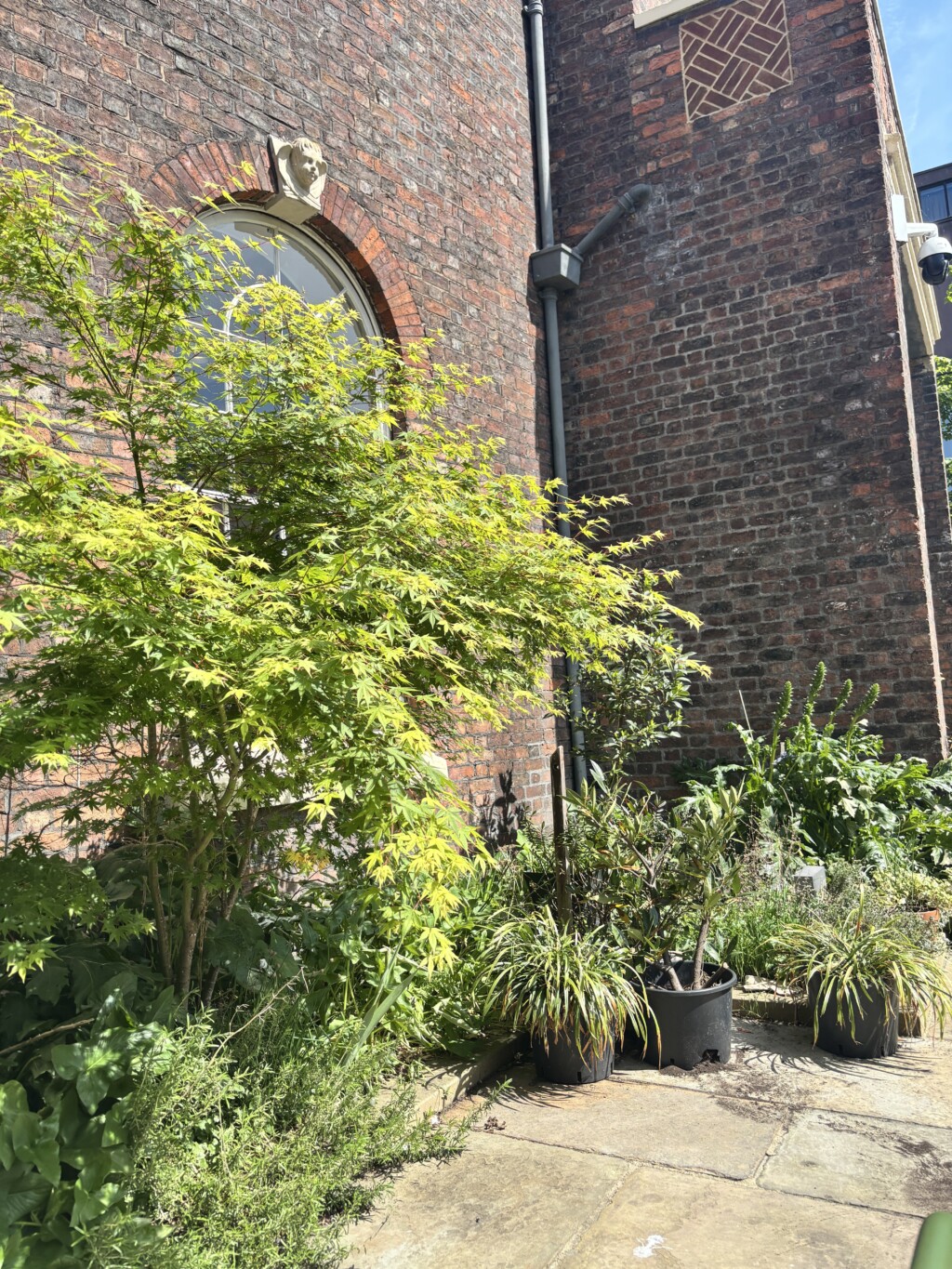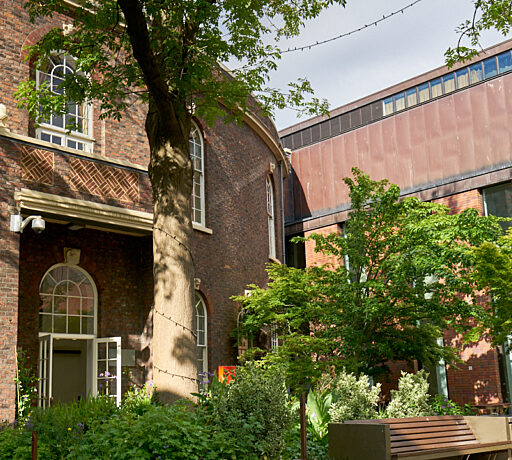In a city with limited quality green space, the Bluecoat’s garden has a long-standing legacy as a haven for nature. Not only is it home to several important species of insects, bees and birds, it provides a rare place for visitors to get close to nature in the middle of a busy city.
In 2023 the Ash trees, which stood tall over the garden, were sadly deemed to be infected with Ash Dieback. This is a serious, fungal disease, and the trees in the garden were deemed to be in poor health, with a risk of falling branches on visitors. This disease is incredibly hard to reverse, and can spread quickly to other Ash trees in the local area. The Bluecoat took advice from local authorities and experts, but the trees sadly had to be felled.
Since the removal, the Bluecoat acted quickly and planted some standard trees of great size and shape to replace the Ash trees, which you can read more about here. The foxglove tree (Paulownia tomentosa) and Handkerchief tree (Davidia involucrata) are both great species that will bring year-round interest and biodiversity to the garden. The foxglove tree is one of the fastest-growing deciduous trees with striking spring flowers that are excellent for our garden’s pollinators. The handkerchief tree is famous for its dramatic white bracts (large white petals that look like handkerchiefs) in late spring, which will delight visitors and provide nectar for insects. Over time, they will mature and bring shelter and food provision for insects and birds as well as colour and vibrancy for visitors.
The Bluecoat has continued to groom after their precious garden sustainably, and ecologically with nature at the forefront of their practices. For example, using perennials and annuals through the seasons which provide food for our residents and visiting birds and insects. They have used the Ash trunk and stumps to provide homes and shelter for invertebrates, something not generally provided in a city centre setting. The Bluecoat continues to build upon its legacy for nature and moves with the times of how to deal with inevitable horticultural pests and disease in an ethical way.
From a school playground and air raid shelter, to a herb garden and sculptors yard, the garden has had several uses over the last three decades, becoming the much loved space it is now. In recent years, the garden has undergone some landscaping changes to make the space more accessible and welcoming to visitors. Today, the Bluecoat garden continues to be an important space thriving with biodiversity, one of the few green spaces in the city centre.
About Andrea Ku
Andrea Ku has previously been our Biodiversity Artist in Residence. She's also an artist, beekeeper and gardener based in Liverpool.
Ku first trained in Fine Art at Manchester Metropolitan University, and then in Landscape Architecture at Leeds Metropolitan University. She was encouraged while working as a gardener to take up beekeeping which proved to be a life changing experience. Now overseeing 35 hives in the Merseyside region, she nurtures thousands of bees in city centre settings, churchyards and botanical gardens.
She joined us in autumn 2020 and has been sharing her insights with the public in specialisms such as permaculture - following sympathetic planting systems observed in nature - and biodiversity - preserving and nurturing the incredible diversity of species in the world at micro and macro level.

